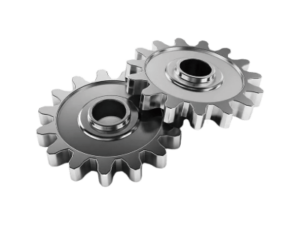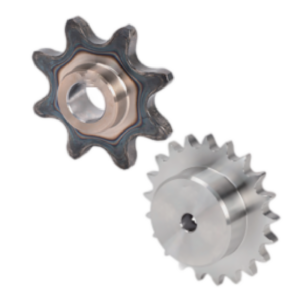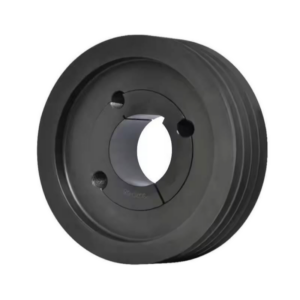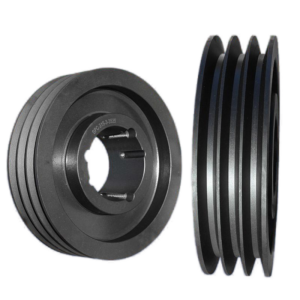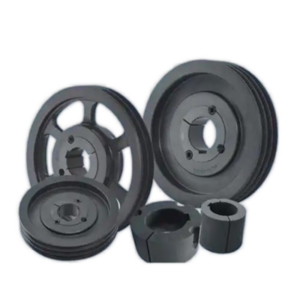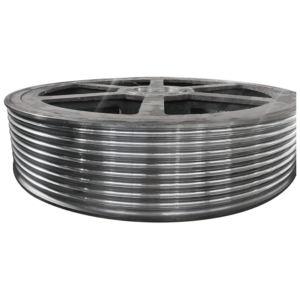Selecting the perfect sprocket for your machinery isn’t just about picking a random part off the shelf—it’s a crucial decision that can impact your equipment’s performance, longevity, and efficiency. Whether you’re upgrading an old system or designing a new one, choosing the right sprocket involves a careful balance of factors. From understanding the different types of sprockets and their specific applications to calculating the ideal sprocket size and pitch, every detail matters. In this guide, I’ll walk you through the essential considerations: how material affects durability, the importance of aligning sprockets and chains, and even how sprocket tooth count influences speed and torque. Plus, I’ll cover best practices for maintenance to prevent wear and tear, ensuring your machinery operates smoothly for years to come. Let’s dive into the world of sprockets and help you make an informed choice for your machinery’s needs.
1. Understanding Different Types of Sprockets and Their Applications
Sprockets come in various designs, each suited for specific applications. The most common types are roller chain sprockets, silent chain sprockets, and block sprockets. Roller chain sprockets are the most widely used in machinery, while silent chain sprockets reduce noise and are ideal for high-speed operations. Block sprockets are often employed in heavy-duty machinery that requires maximum strength and durability. Understanding which type suits your machinery’s function is crucial for ensuring reliable performance.
2. Key Factors to Consider When Choosing a Sprocket for Your Equipment
When selecting a sprocket, several factors must be weighed carefully. These include the pitch size, material, number of teeth, and the environmental conditions in which the sprocket will operate. Each factor affects the sprocket’s performance and its interaction with the chain. For example, choosing the wrong pitch size can result in inefficient power transfer, while the material must be durable enough to withstand the wear and tear of daily use.
3. How Sprocket Material Affects Durability and Performance
The material of the sprocket plays a critical role in its durability and overall performance. Common materials include carbon steel, stainless steel, and alloy steel. Carbon steel sprockets are affordable and strong but may wear out faster in harsh conditions. Stainless steel, while more resistant to corrosion, can be more expensive. Alloy steel sprockets are known for their superior strength and are ideal for high-load or heavy-duty applications. Choose the material that best aligns with the specific demands of your machinery.
4. The Role of Pitch Size in Selecting the Right Sprocket
Pitch size refers to the distance between the centers of two adjacent teeth on the sprocket. It’s a key factor in determining how well the sprocket meshes with the chain. If the pitch is too large or too small, the teeth may not align properly, leading to inefficient operation or excessive wear. To select the ideal pitch size, you must ensure it matches both the sprocket and chain specifications for your machine.
5. How to Match Your Sprocket with the Right Chain for Optimal Performance
Sprockets and chains must work together seamlessly for maximum efficiency. A sprocket that doesn’t match the chain in terms of pitch or tooth count can result in skipped teeth, slippage, or premature wear. It’s essential to choose a chain and sprocket combination that complements each other’s design, ensuring smooth power transmission. Be sure to verify that the sprocket and chain are rated for similar loads and operating conditions.
6. How Sprocket Tooth Count Impacts Machinery Speed and Torque
The number of teeth on a sprocket is a critical factor in determining the machinery’s speed and torque. A sprocket with fewer teeth will increase speed but reduce torque, while a sprocket with more teeth will provide greater torque at the expense of speed. Depending on your machine’s application, you’ll need to balance these two elements. For example, in a conveyor system, you might prioritize torque for moving heavy loads, while in a motorbike, speed might be the focus.
7. Why Sprocket Alignment is Crucial for Your Machinery’s Efficiency
Proper sprocket alignment is essential for the efficient operation of your machinery. Misalignment can cause uneven wear, poor power transfer, and even system failure. Ensure that both the sprocket and chain are properly aligned during installation and periodically check the alignment during maintenance. Misaligned sprockets can lead to additional strain on the machinery, ultimately shortening its lifespan.
8. Common Sprocket Wear and Tear Issues and How to Prevent Them
Like all machinery components, sprockets are prone to wear and tear over time. Tooth wear, chain stretch, and corrosion are among the most common issues. Regular maintenance, such as lubrication and periodic inspections, can help prevent these problems. It’s also important to replace worn sprockets and chains promptly to prevent further damage. Catching wear early can save you from costly repairs and downtime.
9. How to Calculate the Ideal Sprocket Size for Your Machine
Choosing the right sprocket size is essential for optimal performance. To calculate the ideal size, you need to consider factors such as the pitch size, number of teeth, and center distance between sprockets. A quick formula to determine the size involves calculating the ratio of the driven sprocket’s teeth to the driving sprocket’s teeth. Understanding these calculations will ensure you select a sprocket that provides the right power transfer and efficiency for your machinery.
10. Maintaining and Lubricating Sprockets for Longer Equipment Life
Sprocket maintenance is key to extending the lifespan of your machinery. Regular lubrication helps reduce friction and prevent wear, while cleaning ensures that debris doesn’t interfere with performance. Be sure to follow the manufacturer’s recommendations for lubrication intervals and use the right type of lubricant for the environment in which your equipment operates. Proper maintenance can dramatically reduce downtime and costly repairs.
Conclusion
Selecting the right sprocket for your machinery requires attention to detail and a solid understanding of how each component interacts with the system as a whole. By considering factors such as sprocket type, material, pitch size, tooth count, and alignment, you can ensure your machinery runs efficiently and lasts longer. Regular maintenance, including lubrication and wear monitoring, will further extend the life of your sprockets and reduce the need for costly repairs. Armed with this knowledge, you’re now ready to choose the perfect sprocket that will keep your machinery operating at its best for years to come.

